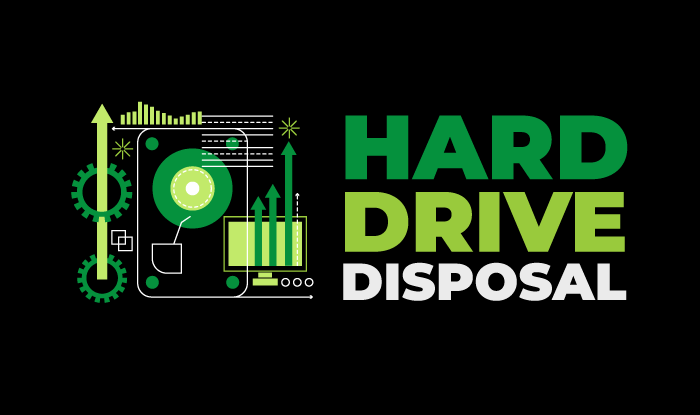Although hard drive destruction and disposal may seem like an easy task, it goes well beyond deleting files and tossing them in the trash. If you want to securely clear your sensitive data, and destroy a hard drive, you need a better process. The best way is to contact a hard drive destruction service. They carry out the process with the most ideal method that ensures your data is securely destroyed and no e-waste occurs.
Whether there is any data on your hard drive or not and if it’s viable, you must think about the consequences if there is any data and it got into the wrong hands. Even if there is the slightest chance, this blog is for you. We will talk about hard drive data destruction, how to properly carry it out, and the dos and don’ts of it. Let’s get started!
What is Hard Drive Destruction?
Hard drive destruction includes a physical effort to shred the hard drive to ensure no recovery of all the information. There are numerous disks present on a hard drive, which are called platters. Proper destruction completely destroys or shreds each platter.
How to Clear A Hard Drive Before Disposal?
Before sending off your hard drive for destruction and disposal, it is best you erase the contents of the drive manually first. Here is how you can do that:
For Windows 7 PCs: Windows 7 does not have a hard disk clearing process as the newer version of Windows does. To wipe your hard drive in Windows 7, you will need a disk-wiping tool. It will clean your hard drive, and it will need a fresh Windows installation to boot.
For Windows 8 PCs: The data removal process in Windows 8 is fairly simple and easy. It has a built-in feature that helps to delete data and wipe your PC clean. To remove disk data:
- Go to “Settings > Update & Recovery > Reset this PC > Fully clean the drive”.
For Windows 10 PCs: The Windows 10 also has a simple and easy built-in hard drive cleaning method that works like a charm. Here are the steps to do it:
- Hit the “Start” button
- Go to the “Settings” menu
- Click on “Update & Security”
- From the left bar, click on “Recovery”
- Under “Reset this PC”, you will see “Get Started”, click that.
- From the opened dialogue box, select “Remove Everything”.
Which is the Most Secure Choice When Preparing a Hard Drive For Disposal?
To properly dispose of your computer (or just the hard drive), you must clean it first. Here are the steps to follow:

- Step 1: Back up your files (documents, photos, videos, or any other that are important to you. You can go to settings, use the Backup Now feature, and copy everything else on an external hard drive.
- Step 2: Transfer your licensed software (some software needs you to deactivate your current session to activate the product on a new computer)
- Step 3: Wipe your hard drive clean (you can use the methods above)
- Step 4: Destroy your hard drive (you can contact secure hard drive disposal services for that, or head to your nearest hard drive disposal unit).
- Step 5: If you want to get rid of the whole PC, simply give it to the disposal unit. If you want to give it to charity or donate it to someone, reset your PC to a fresh state.
Do’s and Don’ts of Hard Drive Disposal
The following are some important dos and don’ts of hard drive disposal that you must follow to ensure your data doesn’t fall into the wrong hands, and no e–waste occurs.
Do # 1: Consider opting for a hard drive data destruction service. They also work on hard drive recycling to extract important components before shredding them. It is the best way to erase the traces of your hard drive and the data present in it.
Don’t # 1: Do not attempt to destroy the hard drive on your own. DIY hard drive destruction is not ideal and you risk generating e-waste. Also, electronic devices and products have certain materials and liquids that are flammable under pressure or if they come into contact with air.
Do # 2: Before handing your hard drive to a disposal service, make sure they have the necessary certification of destruction. Only choose a reliable, NAID-certified hard drive disposal and destruction partner. A professional company keeps track of the hard drive’s life cycle and knows the proper methods to carry out disposal.
Don’t # 2: Don’t just hand out your hard drive to anyone and take their word for its successful destruction. Make sure they carry out proper documentation with your drive’s serial number mentioned on it. It will prevent any issues in the future.
Conclusion
Hard drive disposal services are the best way to properly dispose of your hard drive. A reputable company follows the best practices and industry guidelines to make sure your data remains confidential and nothing goes into e-waste.
Also, make sure to carry out the necessary steps yourself first, like erasing content and backing up your files. It will ensure you don’t lose anything while protecting the environment.


Leave a Reply